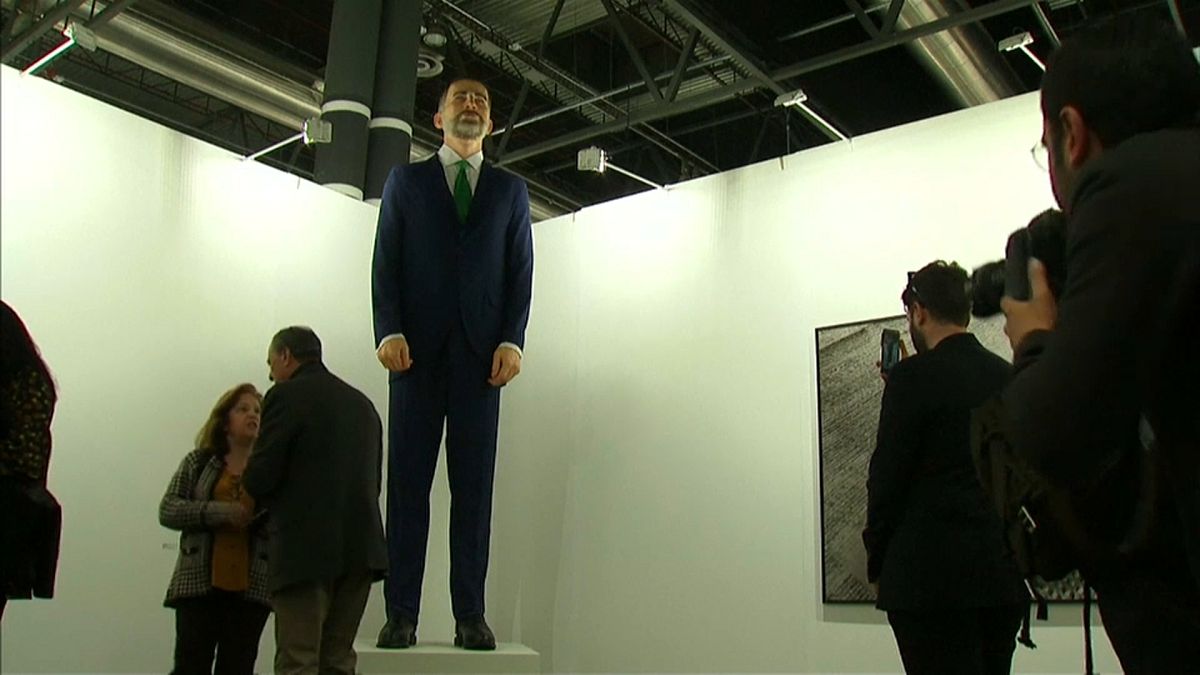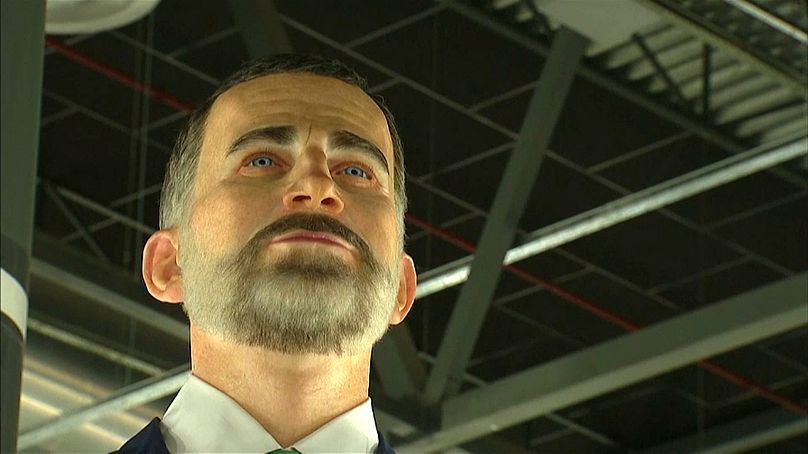Two Spanish artists are selling a statue of the king of Spain but you can only keep it for a year and then you have to burn it.
If you have money to burn you might want to consider splashing out €200,000 on a four-metre statue of Spain's King Felipe.
It's on sale at the ARCO art fair in Madrid.
For most of us, that would be a lot of money, but there is also a catch: you then have to burn the statue within a year and film the whole event.
The work is made of wood and wax and is called "Ninot", the name given to puppets burnt in traditional festivities in the city of Valencia.
The statue was created by Spanish artists Santiago Sierra and Eugenio Merino.
"The artists set out to create a specific project where a sculpture was made but it was not to be a structure that would stand the test of time, but rather an ephemeral sculpture whose objective was to be destroyed," explained Luis Navarro, the assistant to the artists.
"We are looking for a type of a collector who is not obsessed with the idea of possession or accumulation of objectives but actually takes pleasure in destroying the piece of art they've just purchased. And the destruction of the piece will be documented and what remains will be a historical document of its time," he added.
A nod to Banksy
The "Ninot" project comes after the painting by British graffiti artist Banksy, "Girl with Balloon", shredded itself seconds after being sold at auction — only to then increase in value.
READ MORE: Banksy painting 'self-destructs' in artist's prank at auction
"I see this as a performance. It's like Banksy," said art collector Nena von Stumm, who was visiting the art fair.
"I see it as a performance and something that nowadays is valid in art."
A burning issue
Sierra is a provocative artist.
At ARCO last year, his "Political Prisoners in Contemporary Spain", which featured photographs of jailed Catalan politicians, was withdrawn from the art fair and became the centre of a censorship row.
He could well attract similar controversy this year with the statue of the king.
The European Court of Human Rights last year ruled against Spain for jailing two activists for burning pictures of former king Juan Carlos, Felipe's father, in 2007.
Spanish courts have since taken a softer approach, seeing such acts as a form of political expression.
"We want to do this in a legal way," explained Navarro. "We are looking at different options: doing it on private property. Nobody can tell you what to do in your private property, you can do what you want to. Or maybe doing it abroad, in which case we would avoid any kind of repercussions."
"I definitely think it's a provocation," said Rosana Ruiz, who was visiting the fair.
"I don't think it should be illegal to burn it. I'm not a republican or a monarchist but it doesn't bother me, the burning, either. You know what I mean? It's irrelevant to me. I think it's humorous, I think it's a provocation but I don't think it's that great of a provocation."
King Felipe and his wife Letizia inaugurated ARCO on Thursday but did not view "Ninot", a spokeswoman for the art fair said.

